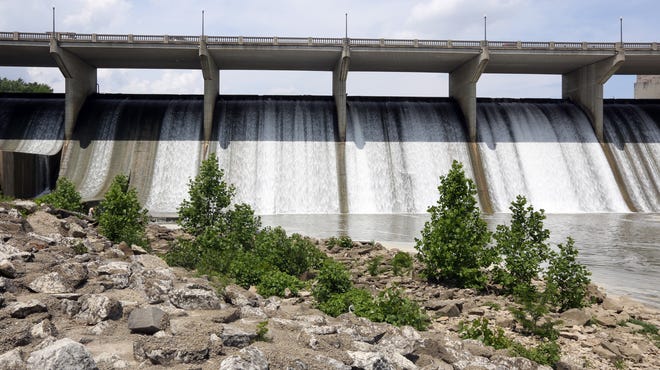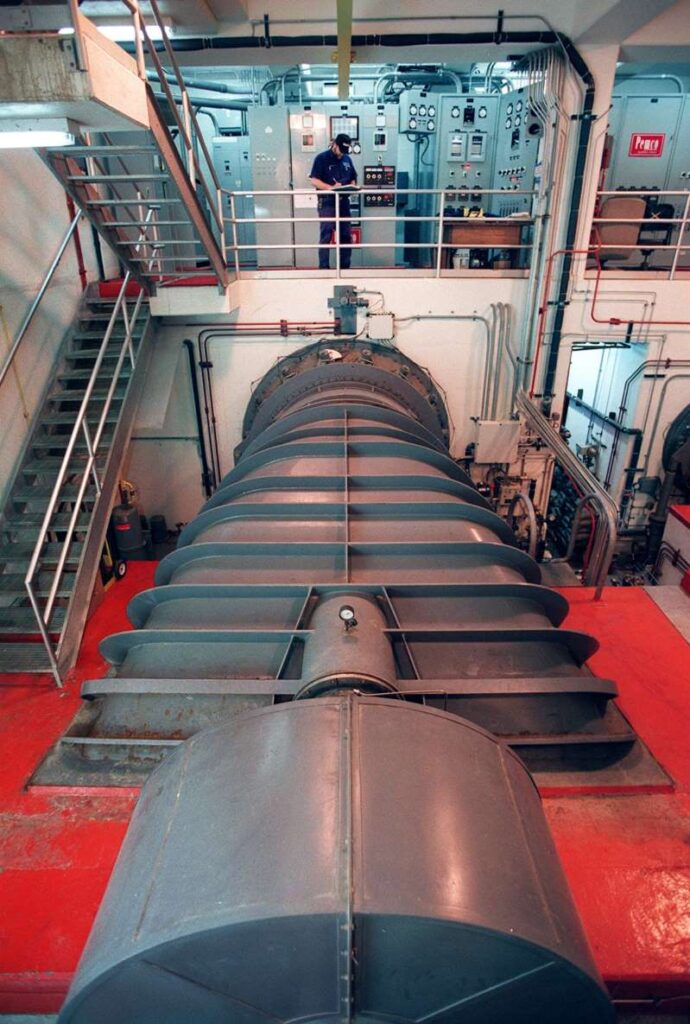Columbus to make electricity again with O’Shaughnessy Dam hydro plant refurbishment

Bill Bush wbush@gannett.com
The last flickers of the city of Columbus’ electric-generation program ceased a few years ago when an aging hydropower unit near the Columbus Zoo and Aquarium had finally deteriorated to the point of being shut down.

With it’s shuttering, the remnants of the city’s once-expansive public power program went completely dark for the first time in over a century.
But at a meeting Dec. 14, the Columbus City Council breathed new life into the utilities’ generation program by approving $15.3 million in bond money to repair the plant at O’Shaughnessy Dam. The dam’s hydro-generators, which began producing power in 1987 under a federal program to reduce reliance on foreign oil, had a 5-megawatt capacity — enough to potentially power thousands of homes.
Plant to be fully operational by mid-2023
The city expects to start construction in February, with the plant fully back to its former operational capacity by mid-2023, said George Zonders, a spokesman for the city Department of Public Utilities, which serves about 17,500 residential and business customers.
The generators will be removed and shipped to the original manufacturer for cleaning, inspection and refurbishment as needed. Control panels and switches at the dam will be upgraded to state-of-the-art technology.
“The decision was made to refurbish this facility to make full use of an underutilized asset,” Zonders said in an email. “This project will further Mayor (Andrew J.) Ginther’s goals for shifting toward green energy and other sustainability goals.”
The peak power output will remain the same at 5 megawatts, he said.
Small-scale hydropower use has increased worldwide the last several years, viewed as an efficient, cheap source of power, but one that has raised environmental concerns related to damming waterways and the effect those changes have on wildlife.
“Many regions of the world, including the United States, are witnessing increased interest and construction of small hydropower plants in recent decades,” said Julian Olden, a professor researching freshwater ecology at the University of Washington in Seattle.
While their small size is generally viewed as having minor ecological consequences, “their sheer numbers in many river basins far exceed large dams, leading to cumulative impacts that can be quite large,” Olden said.
However, since Columbus’ project doesn’t involve adding a dam — O’Shaughnessy Dam was opened in 1925 to provide drinking water for Columbus, not to produce power, which was literally an afterthought — it’s “environmental impacts are already recognized,” Olden said in an email.
The units there were just a fraction of the city’s former utility prowess. Columbus opened a municipal generating plant in 1899, and its public-power system grew steadily during the early 1900s. But by the late 1960s, the city’s Department of Utilities was starting to leave the electricity-generation market, instead purchasing its power off the grid.
The turn-of-the-century Columbus Municipal Light Plant, which still stands near the under-construction Downtown stadium for the Columbus Crew SC, closed in 1977. The city’s “trash-burning power plant,” which opened several years later, turned into a costly environmental debacle by emitting cancer-causing dioxins over the South Side and was shuttered in 1995, with taxpayers stuck paying back hundreds of millions in bonds.
That left only the two O’Shaughnessy generators, which were aging, leaking and in general disrepair and eventually abandoned in February 2017.

Even when operational, the generation plant wasn’t without problems — the main one being that there wasn’t always enough water flowing down the Scioto River to effectively use it throughout the year.
“The O’Shaughnessy Dam is primarily a water supply facility,” Zonders said. “The hydropower facility operates based on water availability in the reservoir. This is based on various factors such as rainfall … water consumption demand and the water levels at both O’Shaughnessy and Griggs dams.”
Another technical glitch, according to Zonders, was fixed years ago: that the unit could violently explode. It once ripped apart a stone gatehouse on the western edge of the dam in an incident that city officials said could have been dangerous to motorists passing by, but luckily injured no one.
“It was just unbelievable that it happened,” John Doutt, city Water Division administrator, told The Dispatch in 1993 about one explosion that closed the Glick Road bridge across the top of the dam for several days. “It’s got to be a freakish set of circumstances.”
A similar, if smaller, explosion also occurred several months before. Modifications were made after it was determined that debris or ice floating in O’Shaughnessy Reservoir could clog the water-intake units to the power plant, triggering a gate to automatically close near the generators. But if the debris suddenly cleared itself, water would flood back into the intake pipes, trapping air against the gate that would be quickly and massively compressed because it had nowhere to go, causing a violent explosion back up to the lake surface.
Vents were added to give the air somewhere to escape.
“We had an engineering team evaluate this issue as part of the most-recent Independent consultant review,” Zonders said. “It was determined to have been addressed and (is) no longer a concern.”
The city doesn’t yet know what its kilowatt-hour cost to produce the hydropower will be when the plant reopens.
“We will be able determine that after it is placed back in operation and we begin to track our annual operation and maintenance expenditures,” Zonders said. “The percentage of time the plant produces power will be totally dependent upon water availability,” noting that with a 5 megawatt nameplate capacity, the plant will produce 120 megawatt hours of power for each day that the Scioto can keep it running full speed.
Delaware County Notes:
The O’Shaughnessy Dam and the upper Scioto River that it crosses is in Delaware County Ohio. With the opening of the bridge atop the dam, people and commerce flowed into areas that had been rural farmland. The western area, Concord Township, is now known as Shawnee Hills Ohio and The Muirfield Golf Courses and Communities. The eastern area, Liberty Township, holds the city of Powell Ohio..
The Delaware County Historical Society embraces all of Delaware County in its work of researching, capturing, educating, and promoting Delaware County History. The Powell-Liberty Historical Society in Powell Ohio is a member of the Delaware County History Network
